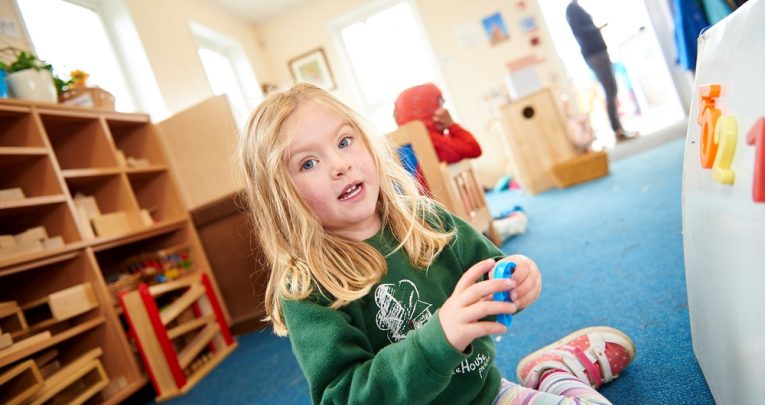Less Is More – How To Go About Decluttering Your Early Years Setting

If the furniture and the amount of equipment in your learning environment is making things feel a little constrained, allow Kirstine Beeley to help you make some space…

- by Kirstine Beeley
- Early years training consultant with 20 years of experience Visit website

One question I’m regularly asked when working with settings to develop learning is, “What can I do to improve my environment?” The answer, more often than not, starts with the reply, “Lose some furniture.” Whether it’s a case of older, more traditional approaches to classroom set-up persisting, or a room having been inherited from older age groups, having too much furniture in a setting is commonplace.
Smaller settings, I find, sometimes try to squeeze in as much furniture as they can, feeling that their children will miss out if they’re not covering all of the traditional learning areas. The good news, however, is that too much furniture is an issue that’s easily overcome…
Make space
To assess what furniture you do and don’t need, you need to reassess what you actually use your furniture for. What activities do you provide that actually require tables for chairs? Are your chairs more for adults than for children? Young children need space to learn and explore, and often prefer to play on the floor. Taking away tables creates inviting spaces where they are free to spread out and explore and extend their ideas. Tables restrict such opportunities and can actually deter children – especially if resources fall off regularly. Practitioners sometimes mistakenly think that you need enough tables and chairs for all children to be able to sit down – you don’t! What you do need is space for everyone to move, to play and to learn, so don’t be afraid to say, “I don’t need these tables and chairs” and put them into storage.
Remove restrictions
Furniture, and tables in particular, can also restrict the kinds of activities children are accessing. A table in a ‘writing area’ suggests that only writing can take place there. Children may even begin to believe that they can only write in that area on that table.
Removing tables from your writing area still allows free access to resources, but will give children the opportunity to find their own space to write. It also frees up more space for others to move and play. Adding portable writing equipment, such as writing baskets, bags and clipboards in all areas of your setting will promote the view that learning can happen anywhere, while allowing independent access and choice.
Decide what to keep
I’m not an advocate of getting rid of all furniture. There are some activities where tabletop space will be needed. Many malleable fine motor activities essential to early pre-writing development, including play-dough play, require a hard surface to press against.
Builders or play trays with adjustable-height legs are ideal for these kinds of activities, but steer away from using chairs with them. Children need to be standing during these kinds of activities to build the back and shoulder muscles that are key to early physical development.
Creative areas also lend themselves to tabletop exploration, but don’t forget to allow access to floor level and provide vertical creative activities as well. Sometimes temporarily removing a table and replacing it with a huge piece of floor paper or a pile of big boxes and paint can have a big impact. Some furniture is vital, so space needs to be found for it. Sand/water play trays are essential and should take priority over formal table learning. Homely, comfortable spaces where children can talk and share books and experiences with each other and adults are also high priority.
Wherever possible, I would advocate including a sofa, rather that hard tables and chairs. Spaces that children can get in and under, rather than around will actively promote communication and language.
Consider the children’s needs
It’s important to make sure any furniture you keep is the right height. Can the children get to the resources kept on top or inside? If you sit on the floor at child height, often your traditional furniture will take on a less-than-age-appropriate look.
Try adding low-level units or nursery tables that are easily accessible. Can you make your furniture multi-purpose? Painting an old, low-level table with blackboard paint will provide you with both a mark-making surface and a tabletop, should it be needed. Covering storage unit tops with felt or fake grass can provide you with higher level play surfaces. The key is to work on the premise that children need variety in the height, size and type of the surfaces they work and play on. More often than not, though, the key to stimulating engaging play in early years is to remember that “Less is definitely more” when it comes to furniture…
Kirstine Beeley is an author and educational consultant; for more information, visit playingtolearnuk.com. Browse more Early Years activities.










